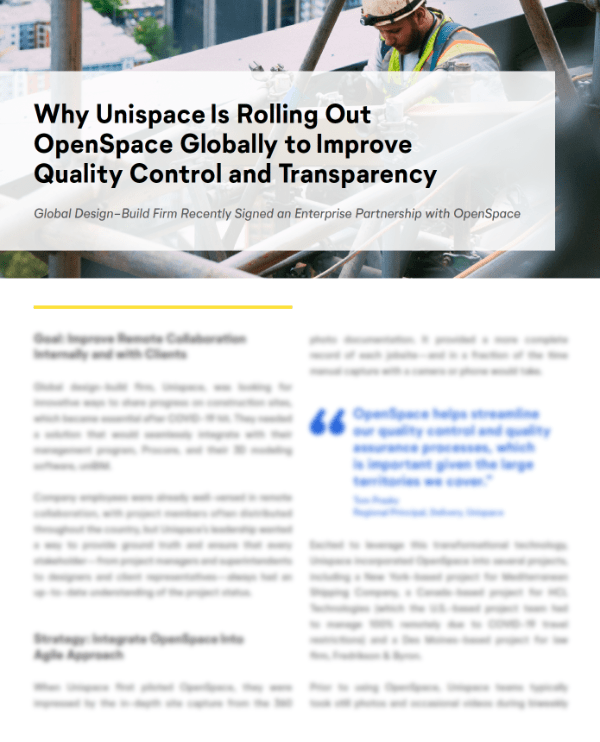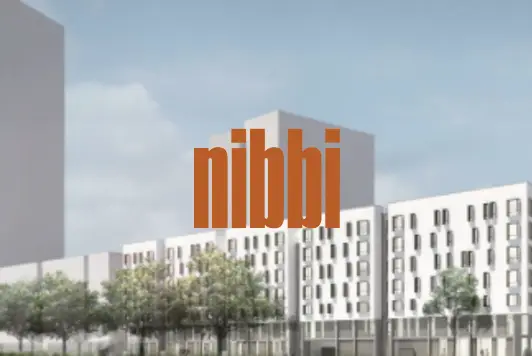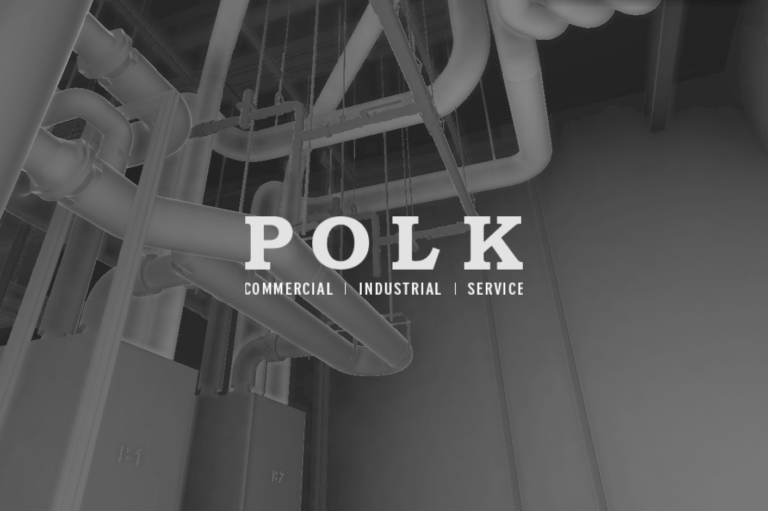Why Unispace Is Rolling Out OpenSpace Globally to Improve Quality Control and Transparency
Founded in 2010 in Sydney, Australia, Unispace is revolutionizing the creation of workplaces. With global experience spanning tech, professional services, bio-pharma industries, and everything in between, the company designs and builds high-performance spaces for a diverse workforce.
Unispace came to OpenSpace for an innovative way to create a single source of truth and provide all stakeholders with a current, accurate understanding of project status. Prior to using OpenSpace, teams captured photos and videos manually during frequent site walk-throughs. With OpenSpace’s automated 360° capture process, teams were able to surface quality issues sooner, and stakeholders valued their new real-time view of site conditions.
Read this case study to learn how, working with OpenSpace, Unispace has achieved 100x more complete documentation, captured 10x faster than manual methods, reduced travel costs by 30%, and saved tens of thousands of dollars on rework. In addition, the company is benefiting from improved collaboration with subcontractors, improved internal collaboration, and greater transparency for clients.
Learn more about the products and technologies featured in this case study:
Daniel Juchima
Senior Project Manager
Unispace




